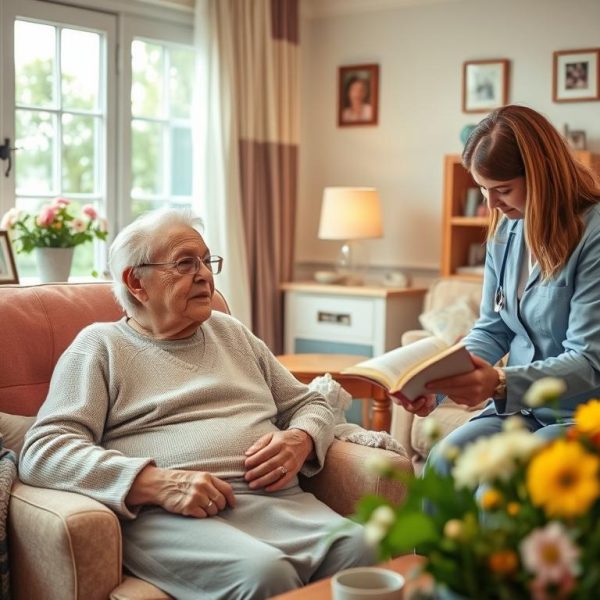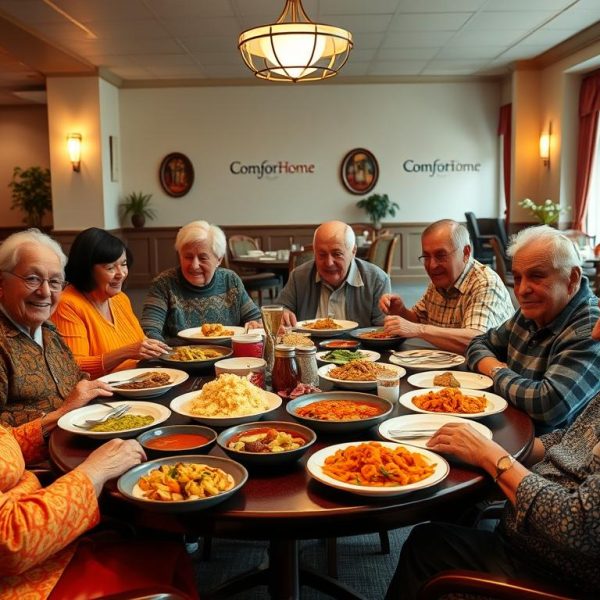As the sun set over the quiet neighborhood of Maple Grove, Mrs. Eleanor Davis sat by her window, sipping her evening tea. The rhythmic hum of the crickets and the soft breeze swaying the curtains made it a peaceful end to a long day. But as she reached down to tie her slippers, a sharp pain shot through her lower back. It wasn’t the first time Eleanor felt this discomfort, and she feared it wouldn’t be the last.
At 75, Eleanor had always prided herself on staying active. She was once an avid gardener, tending to her roses with the same care and attention that she’d given her children. But lately, even the thought of kneeling in her beloved garden made her wince. Her bones, once strong and unyielding, now felt fragile, like they might crumble under the slightest pressure.
This change had come gradually, sneaking up on her over the years. She’d noticed it when she had trouble opening a jar of jam, then when she struggled to carry her groceries, and now, every time she bent down to pick something up. It was a slow erosion of strength that left her feeling vulnerable in her own body.
One evening, as she sat at the dinner table with her daughter, Emily, she voiced her concerns.
“Mom, you’ve been looking a little more tired lately. Everything okay?” Emily asked, her brow furrowed with worry.
Eleanor hesitated but finally admitted, “I’ve been having some pain in my back, and it’s getting harder to do things I used to enjoy. I just don’t feel as strong as I used to.”
Emily reached across the table and squeezed her mother’s hand. “You’ve been through so much, Mom. Maybe it’s time we talk to Dr. Hayes about what’s going on. It could be something as simple as needing more calcium.”
The mention of calcium brought a faint smile to Eleanor’s lips. She remembered her own mother telling her to drink her milk every day to keep her bones strong. But that was a long time ago, and she hadn’t given much thought to calcium since then.
A week later, Eleanor found herself sitting in Dr. Hayes’ office, the familiar smell of antiseptic in the air. Dr. Hayes, a kind and patient man, listened carefully as Eleanor described her symptoms. After a thorough examination and some lab tests, he sat down with her to discuss the results.
“Mrs. Davis, your bone density has decreased over the years, which is common as we age. Your body isn’t absorbing calcium as efficiently as it used to, which is why you’re experiencing this pain and weakness,” he explained.
Eleanor nodded, trying to process the information. “So, what can I do? I don’t want to lose my independence.”
Dr. Hayes smiled reassuringly. “There are several things we can do to help. One of the most important is ensuring you’re getting enough calcium. It’s essential for keeping your bones strong, especially as you get older.”
He went on to explain that calcium isn’t just vital for bones but also for muscle function, heart health, and nerve transmission. “Think of calcium as the foundation of a house,” he said. “Without it, the structure becomes weak and unstable.”
Eleanor learned that as she aged, her body’s ability to absorb calcium from food had diminished, leaving her at risk for conditions like osteoporosis. Dr. Hayes recommended a combination of dietary changes and calcium supplements to ensure she was getting enough of this critical mineral.
He handed her a pamphlet titled Nourishing Aging Bones: A Comprehensive Look at Calcium Supplementation in Elderly Nutrition. Eleanor took it home, determined to understand more about what she could do to regain her strength.
Understanding the Role of Calcium in Aging
That evening, Eleanor sat down with the pamphlet, eager to learn. The first section was all about the role of calcium in aging. As she read, she realized just how vital this mineral was to her overall health.
Calcium, it explained, was not just for bones. It played a crucial role in muscle contraction, helping her to move and stay active. It supported heart health by maintaining a normal heart rhythm and contributed to the proper functioning of the nervous system, which was essential for everything from thinking to coordination.
But what struck Eleanor the most was the part about bone health. The pamphlet described how bones naturally lose density as we age, becoming more porous and fragile. This process, called osteoporosis, was responsible for the increased risk of fractures in older adults. The idea that her bones were slowly becoming brittle was a sobering thought.
However, the pamphlet reassured her that with the right nutrition and supplementation, she could slow down this process and keep her bones strong. It mentioned that for women over 50 and men over 70, the recommended daily calcium intake was 1,200 milligrams. This was more than she’d ever considered before.
Finding the Right Sources of Calcium
The next section of the pamphlet talked about how to get enough calcium. It listed several calcium-rich foods that could easily be incorporated into a daily diet. Eleanor made a mental note to ask Emily to pick up some of these items the next time they went grocery shopping.
Dairy products like milk, yogurt, and cheese were at the top of the list, which didn’t surprise her. She’d always enjoyed a slice of cheddar with her afternoon tea. But there were other options too, like leafy green vegetables, salmon, and sardines. Even fortified foods like orange juice and tofu were good sources of calcium.
Eleanor was particularly intrigued by the idea of adding more leafy greens to her diet. Spinach, kale, and collard greens were all rich in calcium, and she could already imagine trying out new recipes with them. She also decided to give sardines a try, even though the idea of eating fish with bones still made her a little uneasy.
But what if diet alone wasn’t enough? The pamphlet explained that for many elderly individuals, it could be challenging to get the necessary amount of calcium through food alone, especially if they had dietary restrictions or a decreased appetite. In these cases, calcium supplements could be a valuable addition to their daily routine.
The Benefits of Calcium Supplementation
Eleanor turned the page and found a section dedicated to the benefits of calcium supplementation. It was comforting to read that adding a calcium supplement to her diet could significantly improve her bone health and reduce the risk of fractures.
The pamphlet mentioned a study that showed calcium supplementation was associated with increased bone mineral density in older adults. This meant that with the right amount of calcium, her bones could become stronger, reducing the likelihood of fractures in areas like the hips, spine, and wrists—places that were particularly vulnerable as people aged.
But the benefits didn’t stop at bone health. Calcium supplementation could also enhance muscle function, making it easier for her to stay active and independent. It could support heart health, helping to keep her blood pressure in check and reduce the risk of cardiovascular diseases. And it could even help preserve her dental health, keeping her teeth strong and preventing problems like tooth decay and gum disease.
As she read, Eleanor began to feel a sense of hope. She wasn’t doomed to a future of frailty and dependence. There were steps she could take, starting with something as simple as ensuring she got enough calcium every day.
Risks and Considerations
However, the pamphlet also cautioned against taking calcium supplements without careful consideration. It was important to consult with a healthcare professional to determine the right dosage and to be aware of potential risks.
One of the risks mentioned was hypercalcemia, a condition where there’s too much calcium in the blood. This could lead to kidney stones, confusion, and even heart problems. Eleanor made a note to ask Dr. Hayes about this at her next appointment.
The pamphlet also discussed the importance of choosing the right type of calcium supplement. There were different forms available, like calcium carbonate and calcium citrate. Calcium citrate was easier for the body to absorb, especially for older adults who might have reduced stomach acid.
Eleanor realized that taking calcium wasn’t as simple as just popping a pill. It required careful consideration and regular monitoring to ensure she was getting the right amount without any negative side effects. She was grateful that Dr. Hayes had taken the time to explain this to her and that she had this information to guide her decisions.
Incorporating Calcium into Daily Life
The next day, Eleanor and Emily went shopping. Armed with her new knowledge, Eleanor filled her cart with foods rich in calcium. She picked up some kale, a few cans of sardines, and a bottle of fortified orange juice. She also bought a calcium supplement, choosing one that Dr. Hayes had recommended.
Back at home, Eleanor started making small changes to her routine. She added a handful of kale to her morning smoothie, topped her salad with some sardines, and enjoyed a glass of milk with dinner. And each evening, she took her calcium supplement with a meal, just as the pamphlet had advised.
The changes were small, but Eleanor felt empowered. She was taking control of her health, doing what she could to stay strong and active. And over time, she noticed the difference. The pain in her back wasn’t as severe, and she found it easier to move around. Her bones felt less like fragile crackers and more like the sturdy pillars they once were.
Conclusion: A Path to Stronger, Healthier Bones
As the weeks went by, Eleanor’s confidence grew. She knew that aging was inevitable, but she also knew that she didn’t have to accept weakness and frailty as part of the package. By nourishing her body with the calcium it needed, she was giving herself the best chance to age gracefully and maintain her independence.
Eleanor’s story is one that resonates with many older adults. The journey to stronger, healthier bones is a personal one, but it’s a journey that offers hope, resilience, and empowerment. With each step she took—whether it was adding calcium-rich foods to her diet, engaging in regular physical activity, or simply staying informed—Eleanor was crafting a future where she could live fully and vibrantly.
This journey is not just about physical strength; it’s about reclaiming control over one’s health and well-being. By making informed choices today, older adults like Eleanor can pave the way for a life that’s not only longer but also richer in quality and joy. It’s about embracing the strength within, taking proactive steps, and knowing that it’s never too late to build a healthier, more resilient future.









I loved as much as you will receive carried out right here. The sketch is tasteful, your authored material stylish. nonetheless, you command get bought an nervousness over that you wish be delivering the following. unwell unquestionably come further formerly again as exactly the same nearly a lot often inside case you shield this increase.
This web site is really a walk-through for all of the info you wanted about this and didn’t know who to ask. Glimpse here, and you’ll definitely discover it.
Hello there! This post couldn’t be written any better! Reading this post reminds me of my old room mate! He always kept talking about this. I will forward this page to him. Pretty sure he will have a good read. Many thanks for sharing!
I like the efforts you have put in this, regards for all the great blog posts.
Thank you, I’ve just been searching for information about this topic for a long time and yours is the best I’ve came upon so far. However, what concerning the bottom line? Are you sure in regards to the source?
Great blog here! Also your web site loads up fast! What web host are you using? Can I get your affiliate link to your host? I wish my web site loaded up as fast as yours lol
I have to get across my admiration for your kindness in support of those people that really want assistance with your situation. Your real dedication to getting the message all-around appeared to be especially practical and has usually permitted employees just like me to get to their objectives. Your invaluable instruction implies a whole lot a person like me and much more to my mates. Warm regards; from everyone of us.
I would like to thnkx for the efforts you have put in writing this site. I am hoping the same high-grade blog post from you in the upcoming also. Actually your creative writing skills has encouraged me to get my own website now. Really the blogging is spreading its wings fast. Your write up is a good example of it.
Thank you for another excellent post. The place else may just anybody get that type of info in such a perfect means of writing? I have a presentation next week, and I am on the look for such information.
I believe this website has some rattling wonderful information for everyone :D. “Believe those who are seeking the truth doubt those who find it.” by Andre Gide.
Everyone loves what you guys tend to be up too. This sort of clever work and exposure! Keep up the superb works guys I’ve added you guys to my blogroll.
It’s really a great and useful piece of info. I’m glad that you shared this useful info with us. Please keep us informed like this. Thank you for sharing.
I’ve recently started a site, the information you provide on this web site has helped me tremendously. Thank you for all of your time & work.
I would like to thank you for the efforts you’ve put in writing this site. I’m hoping the same high-grade website post from you in the upcoming also. In fact your creative writing abilities has inspired me to get my own blog now. Really the blogging is spreading its wings rapidly. Your write up is a good example of it.